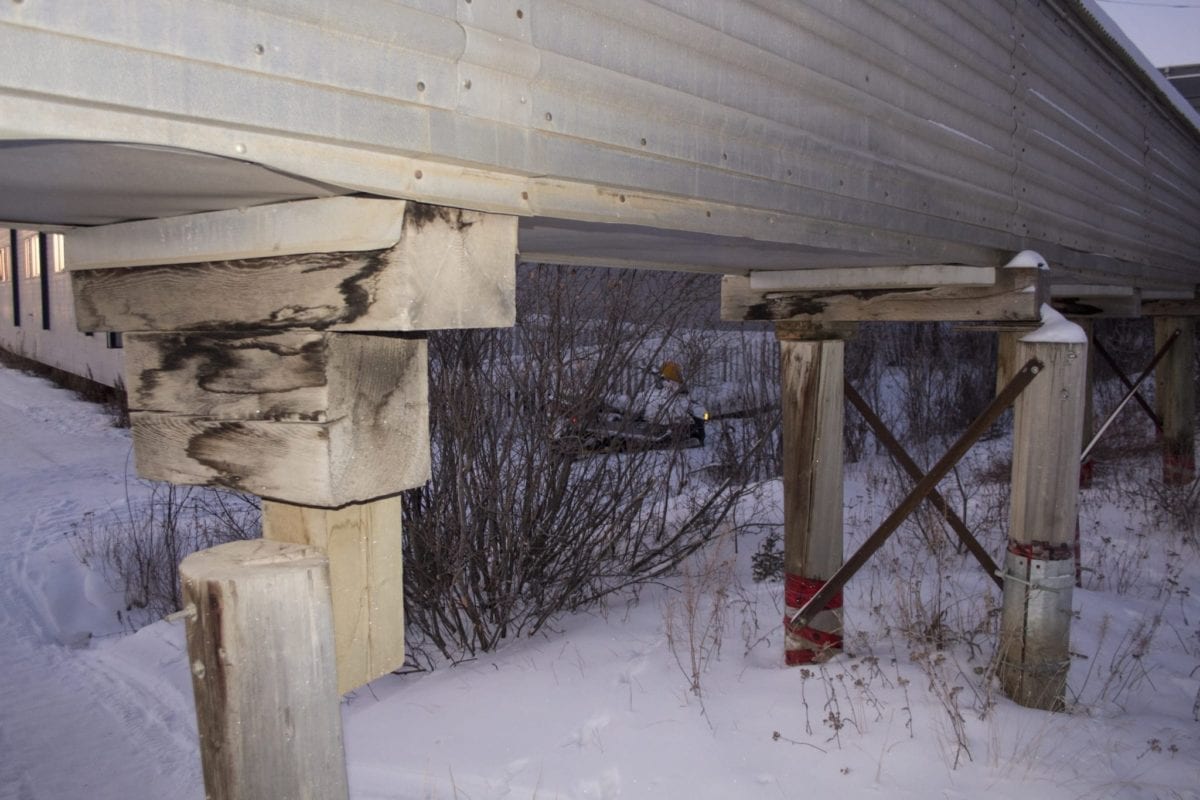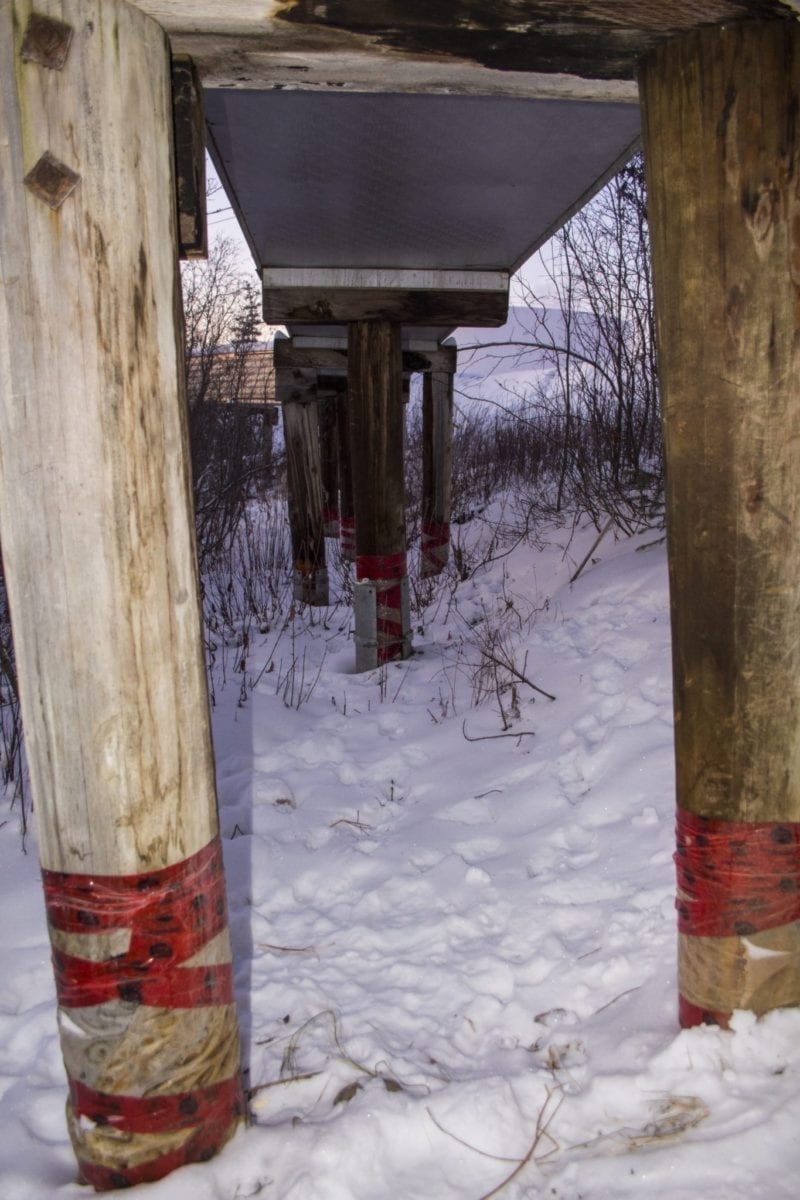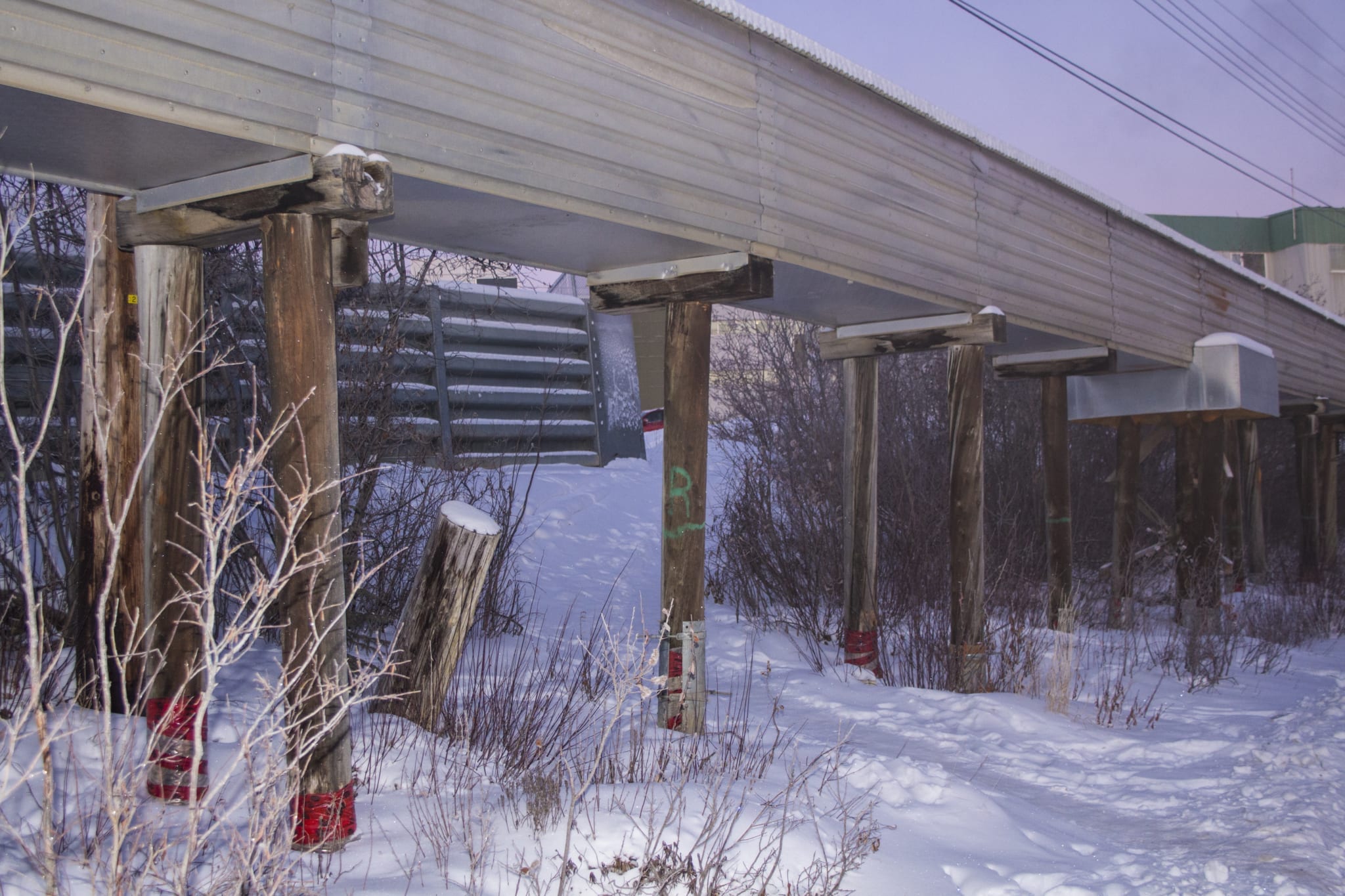
Inuvik still has 6,400 metres of original utilidor in service, with some sections nearing 65 years old, over twice their intended service life. Costs to replace the system are being pegged at $80 million.
That's the blunt message of an engineer's report prepared for town council by senior municipal engineer Michael Maltais of McElhanney Group, who presented his report at council's Dec. 9 committee of the whole meeting.
"It's looking a little bleak, but the town's been doing a really good job of carrying the weight and putting money into this. It's just inflation is catching up to us," he said. "This old utilidor is a testament to what the engineers did. It's 60 years old and is going strong. Everything was done right except they used wood instead of steel piling. It's actually quite amazing how long it has lasted.
"If we didn't have the wood piling, it would probably go for another 50 years. It's just the supports that are gone."
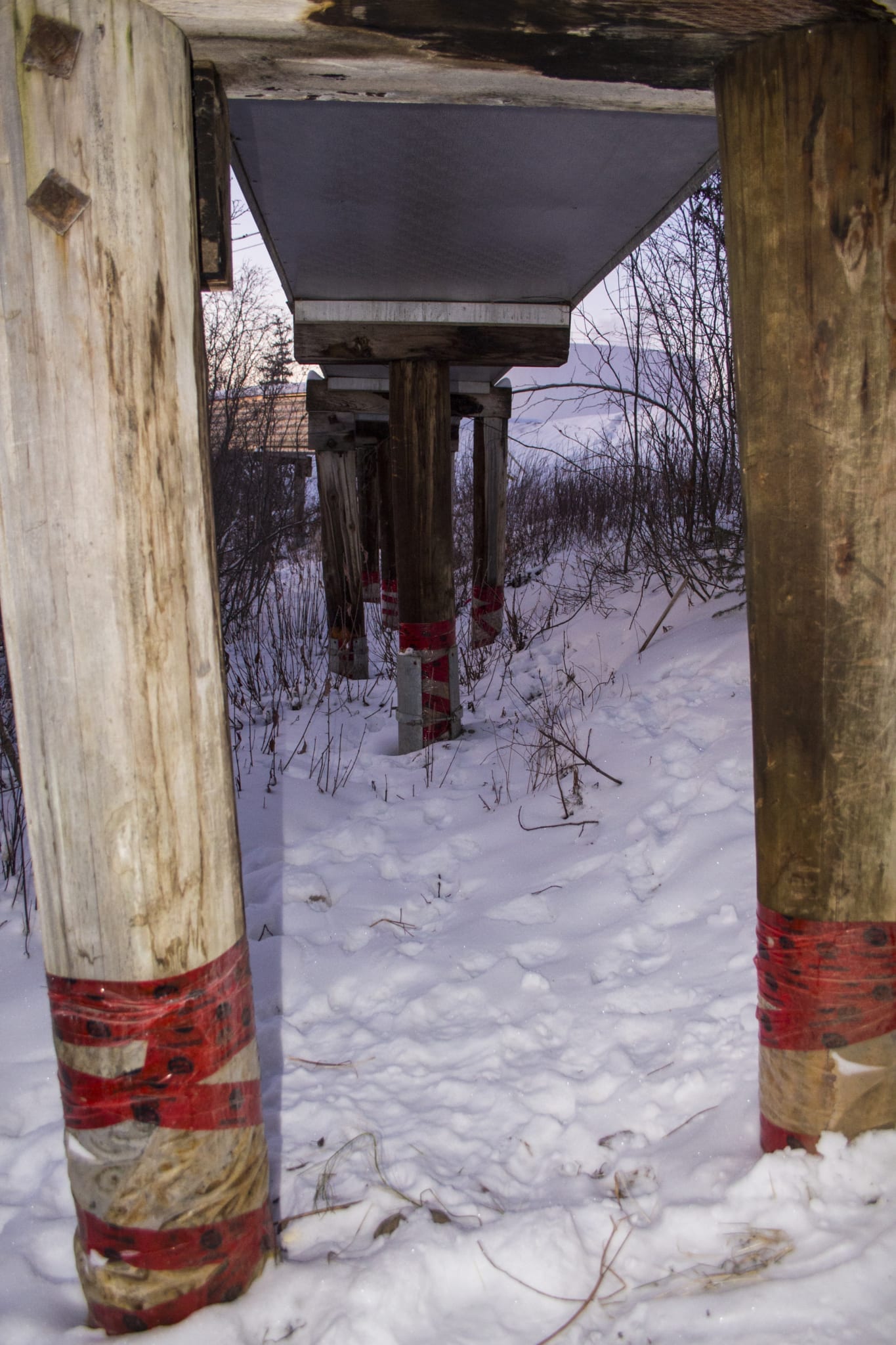
Inuvik's utilidor system is the largest in the Northwest Territories.
While extremely well designed and heavily maintained by public works, the original design did not factor the effects of climate change. Consequentially, the original wood pilings, which were supposed to transfer the weight of the system to the permafrost below, are now heaving and sinking as the permafrost melts.
The pilings that are still there, anyway. Maltais noted that many of the pilings, also long past their expiry date, were rotted. He added the town has used a number of clever tricks to keep the poles upright and holding the system up.
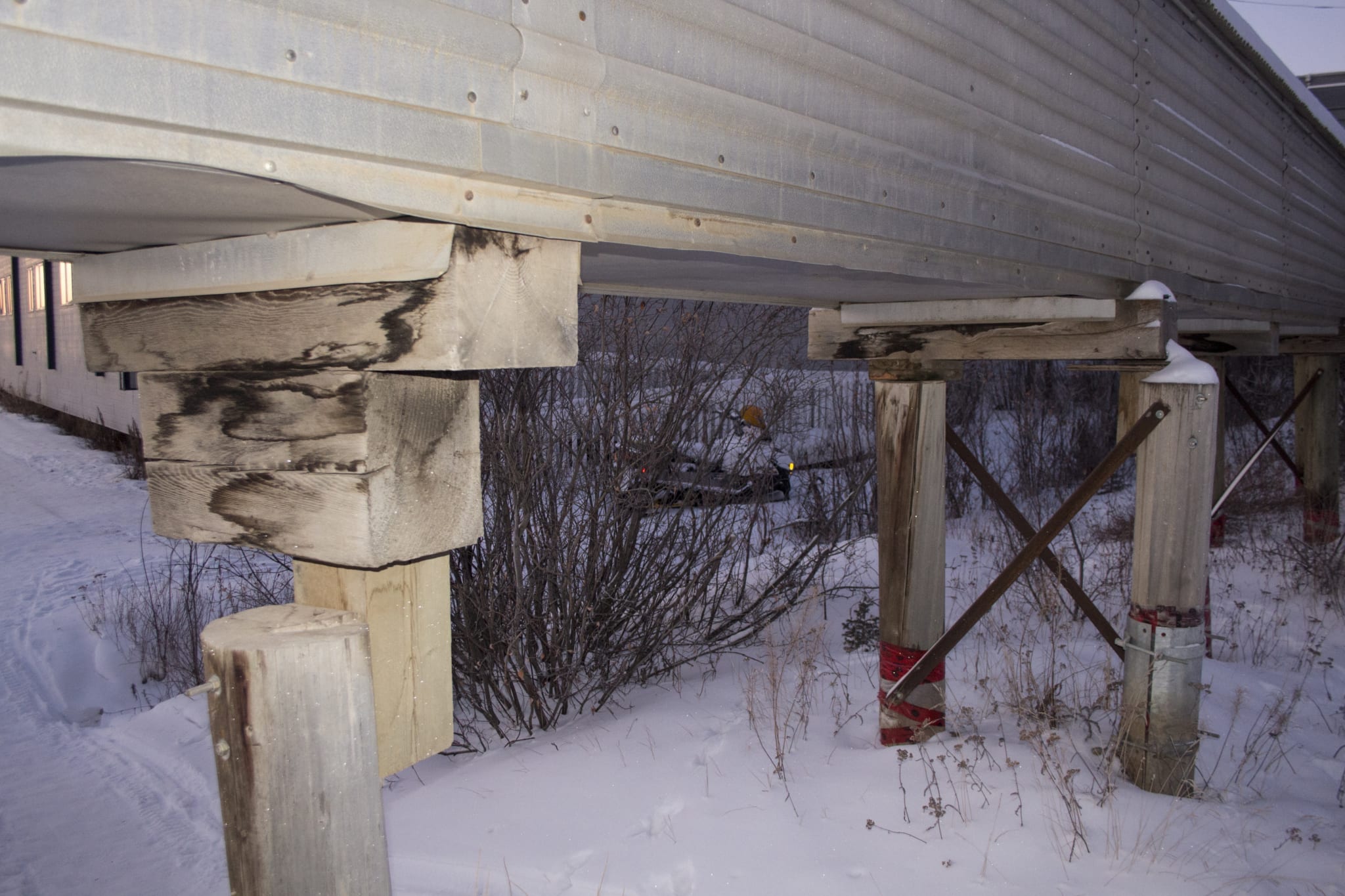
Both of these affect the incline and decline of the utilidors, which affects the pressure of the fluid being transported — particularly with sewage.
"The biggest issue with the utilidor is the wood piling," said Maltais. "It's not meant to last this long. It's 60 years in the ground and there's various amounts of rots. Some places it's minimal, other places it's collapsing."
A separate but compounding problem is the aging infrastructure, particularly the valves, many of which are long past service life and have been bypassed. Lastly, the report says the town's supervisory control and data acquisition (SCADA) system is no longer useful and workers were limited on what real-time data they could obtain through the system.
"I don't know what computers you guys were using in the 1980s, but this system is still using it," said Maltais.
He wrapped up his assessment by pointing out Inuvik is located in a moderate earthquake zone, meaning there is a five to 15 per cent chance significant damage could occur every 50 years.
A GNWT Hazard Identification and Risk Assessment of Inuvik lists earthquakes as a "low" hazard. A magnitude 5.8 earthquake 40 kilometres northwest of Fort McPherson in 2008 shook buildings in Inuvik but did not cause any damage. The Beaufort Delta experiences minor earthquakes every year.
In spite of that, Maltais cautioned a once-in-50-years-event would be serious.
"With those old rotting wood piles, if you had a significant earthquake it would not likely result very well," he said. "Those metal clamps are really good at vertical, but they don't handle side-to-side very well.
"So, obviously, the risk is you could have a collapse of the utilidor. Depending on where that is, it could cause significant damage elsewhere in town. The system depends on circulation to prevent freezing. If it happened this week, you would have concerns about freezing pipes."
Replacing main lines will cost $20 million over four years
Currently, the town's budget for replacing the utilidor is $2.5 million annually. Noting that much of the original system has already been replaced and does not have the challenges mentioned above, Maltais said the plan was to focus on three key parts that were most vital to the system.
First on the list is the line connecting the town's water reservoirs, water treatment plant, the power plant, the RCMP station, post office and the hospital, as well as everything in between. Maltais estimated the costs of replacing the line at $20 million and said it would have to be phased over four years, starting with the water treatment plant.
That fix alone would relieve many of Maltais' concerns about the main line's risk of failure.
Mayor Natasha Kulikowski said the town would look to federal funding to cover the costs.
"Part of the conversation that we've had is whether this might fall under federal funding for disaster mitigation due to climate change," she said. "So we will be investigating that further as a funding option."
No public safety risk: Fire Chief
In spite of the potential for major headaches, public safety officer Cynthia Hammond stressed the town's fire department was prepared for a disruption to the town's water service.
"Our water supply is not an issue," she said. "If for some reason part of the utilidor is inoperable, we can still access other parts of the line. Because of our trucks, we can do a pump relay and use a truck to feed another truck with a high volume hose.
"In any rural fire department, we have drafting operations such as dropping a portable pond or water basin and drafting water from that and one of our trucks would simply be a water tender to keep it filled."
All the town's water trucks have a full six minutes of water flow each, which is usually enough to suppress most fires.
She added the department was able to move water throughout the town on its own and had numerous sources in the event the town were to experience a water shortage, noting the fire department has to bring its own water when it deals with fires at the airport.
In a worst-case scenario, she added the department had agreements with businesses around town to provide even more capacity for moving water. She added the water flow from the reservoir is gravity fed, so there was no danger of the town's water supply drying up in a disaster.
"If we do need to draft water from the river or a static source, it would not just be the fire department at this point, we would be shuttling with the help of the other companies from town."
